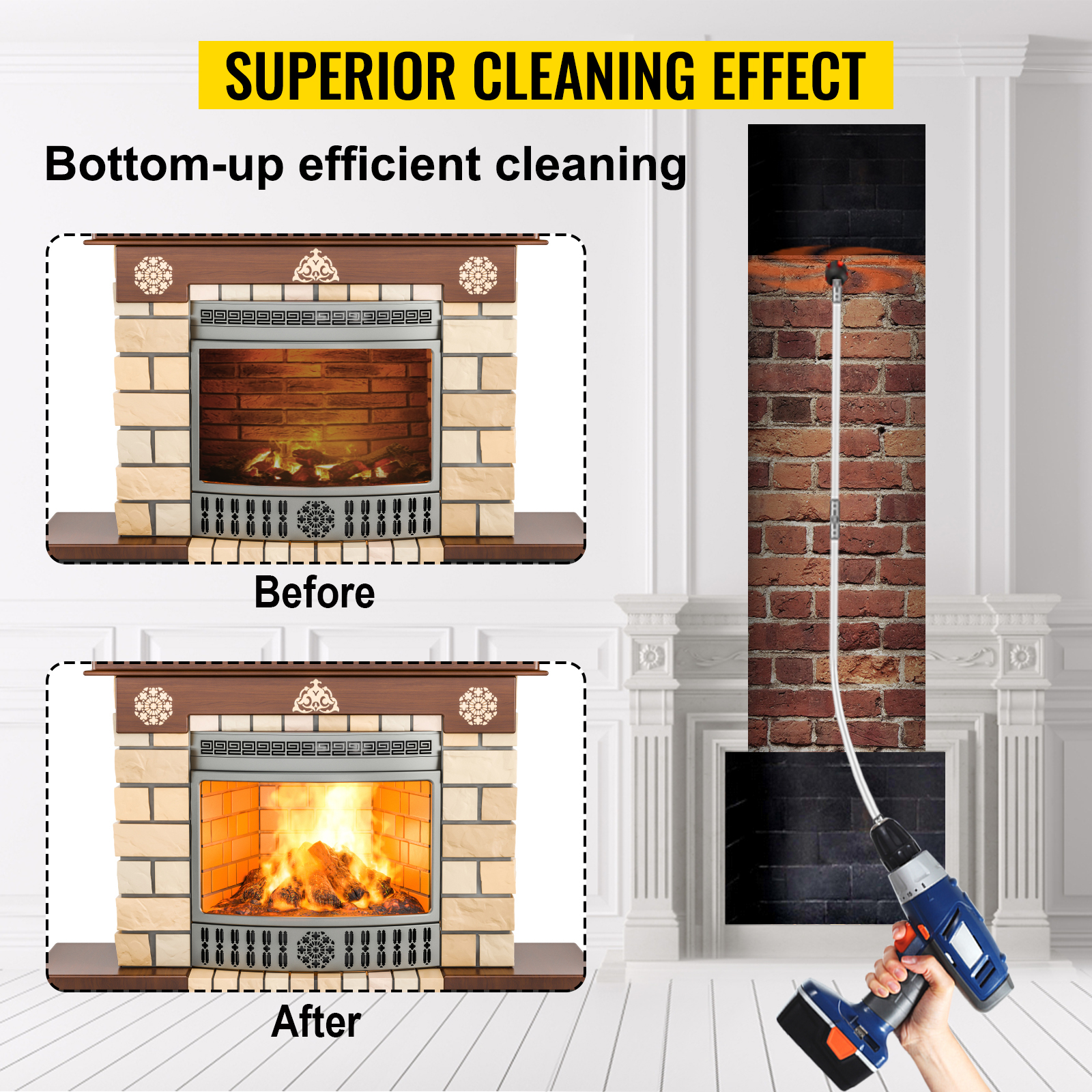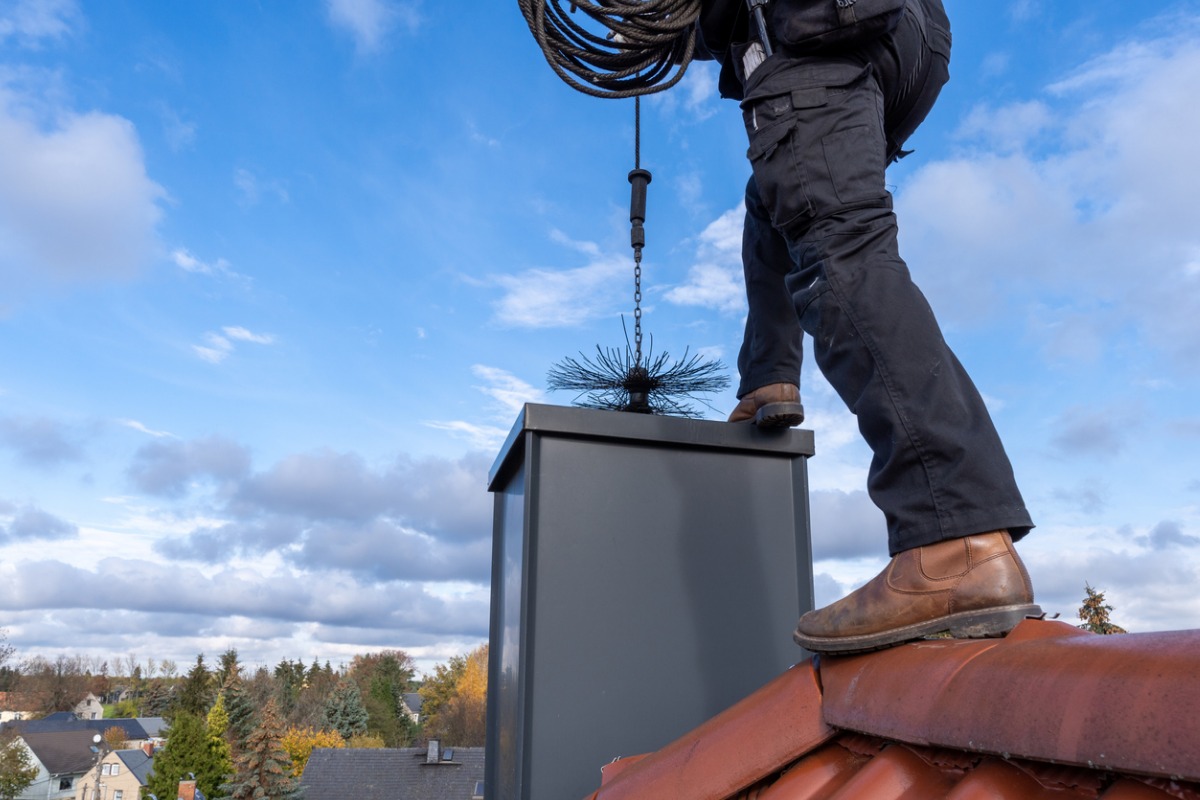Do It Yourself Chimney Sweep San Jose: Step-by-Step Recommendations for Success
Do It Yourself Chimney Sweep San Jose: Step-by-Step Recommendations for Success
Blog Article
The Ultimate Chimney Cleansing List for Homeowners
A well-kept chimney not only improves the total functioning of your home heating system but additionally reduces the risk of prospective risks such as fires and carbon monoxide leaks. Chimney Sweep San Jose. From examining the smokeshaft structure to eliminating creosote build-up, each step plays a crucial function in safeguarding your home and liked ones.
Smokeshaft Inspection and Assessment
When carrying out a chimney evaluation and evaluation, it is important to completely check out the interior and exterior parts for indications of damages or build-up. The inside of the chimney should be checked for any kind of obstructions, such as bird nests or excess residue, which can present a fire risk. Examining the flue for creosote buildup is important as this extremely flammable substance can create a smokeshaft and spark fire. In addition, evaluating the condition of the chimney liner is important to make certain correct air flow and security.

Exterior Upkeep and Services
Examining the exterior of the smokeshaft for any type of architectural issues, such as splits, loosened bricks, or indicators of water damages, is crucial in making certain the general safety and longevity of the smokeshaft. Regularly inspecting for any cracks in the mortar or blocks can help protect against water from leaking in and causing damages to the smokeshaft structure. Addressing these outside upkeep problems in a prompt way can lengthen the life of your chimney and avoid costly fixings down the line.
Cleaning the Smokeshaft Flue and Damper
To guarantee proper working and safety of your chimney, normal cleansing of the chimney flue and damper is essential. The chimney flue is the flow that allows smoke and gases to leave your home, while the damper is a movable plate that controls air flow. Begin by evaluating the flue for any blockages such as bird nests, debris, or creosote accumulation. Make use of a flashlight to check for any type of indicators of damage or obstructions. Next off, carefully eliminate any kind of debris utilizing a smokeshaft brush or vacuum cleaner designed for this function. Make certain that the damper opens and closes smoothly, as a correctly working damper aids manage airflow and protects against drafts when the smokeshaft is not in use. Furthermore, think about setting up a chimney cap to stop particles and animals from going into the flue. Routine upkeep of the smokeshaft flue and damper not only enhances the performance of your smokeshaft yet additionally decreases the risk of smokeshaft fires and carbon monoxide build-up in your home.
Eliminating Creosote Accumulation Safely
Just how can home owners securely eliminate creosote buildup from their chimney to keep its ideal functioning and safety? Creosote, a result of burning wood, can accumulate in smokeshafts gradually, positioning a fire hazard if not properly taken care of. To safely remove creosote build-up, begin by guaranteeing the chimney is amazing and there are no sticking around ashes. Use a flashlight to evaluate the interior of the chimney for creosote deposits.
There are different approaches to eliminate creosote, depending on the build-up's seriousness. For get more light creosote build-up, making use of a chimney brush or a homemade creosote eliminator constructed from equal components water and vinegar can be efficient (Chimney Sweep San Jose). For thicker deposits, professional chimney cleansing services might be essential
It's vital to wear protective gear such as handwear covers, goggles, and a mask when handling creosote to stop skin irritation or breathing. Furthermore, appropriate air flow while cleansing the chimney is important to prevent breathing in dangerous fumes. Regular smokeshaft evaluations and cleanings can aid prevent creosote blog accumulation, making sure the security and performance of your chimney.
Fire Safety And Security Precautions for Chimney Owners
Routine chimney examinations by licensed specialists are critical to recognize any kind of blockages, creosote accumulation, or architectural concerns that might posture a fire risk. Setting up a chimney cap can protect against debris, animals, and rain from getting in the chimney and creating clogs or damage. Additionally, smokeshaft owners need to have a stimulate arrestor or smokeshaft stimulate arrester mounted to prevent sparks from escaping and potentially igniting neighboring combustibles.

Verdict
By complying with the utmost chimney cleaning list described in this article, property owners can examine, clean, and repair their chimney properly. Appropriate maintenance not just minimizes the risk of chimney fires but additionally prolongs the lifespan of the smokeshaft system.
Checking the smokeshaft cap and crown for any kind of damage is vital to protect against water from seeping right into the chimney and creating further degeneration.
Regular maintenance of the smokeshaft flue and damper not only enhances the performance of your chimney yet likewise lowers the threat of chimney fires and carbon monoxide accumulation in your home.
Normal smokeshaft inspections and cleanings can assist protect against creosote buildup, making certain the safety and security and effectiveness of your chimney. (Chimney Sweep San Jose)
Installing a smokeshaft cap can prevent particles, pets, and rain from going into the smokeshaft and causing clogs or damages. Correct upkeep not only lowers the threat of chimney fires however click now also extends the life-span of the smokeshaft system.
Report this page